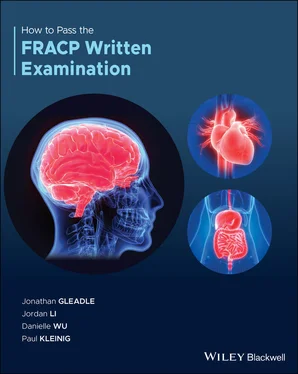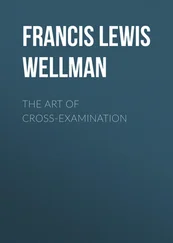In patients with a positive overnight dexamethasone (1 mg) suppression test, that is a morning serum cortisol >139 nmol/L, confirmatory tests including serum corticotropin, 24‐hr urine cortisol collection, midnight salivary cortisol, and a formal 2‐day high‐dose dexamethasone suppression test, are required to establish the diagnosis of Cushing's syndrome.
The size of the adrenal tumour does not affect recommendations regarding biochemical testing. However, adrenal tumours that are greater than 4 cm in diameter raise concern for potential primary adrenocortical malignancy.
Due to its high cost and a greater (FDG‐PET) uptake in a small percentage of benign adrenal lesions compared to the background uptake, PET scans are not routinely recommended to evaluate patients with adrenal incidentaloma without a history of malignancy.
Image‐guided fine‐needle aspiration (FNA) biopsy is generally not recommended to differentiate between adrenal vs non‐adrenal tissues (metastases or infection), due to risks associated with possible biopsy of a phaeochromocytoma or seeding of metastasis. It is important to biochemically rule out pheochromocytoma before considering performing an FNA biopsy of the adrenal mass due to the potential hypertensive crisis and bleeding complications associated with pheochromocytoma.

Young W. The Incidentally Discovered Adrenal Mass. New England Journal of Medicine. 2007;356(6):601–610.
https://www.nejm.org/doi/full/10.1056/NEJMcp065470
4. Answer: C
Amiodarone, is a potent class III antiarrhythmic drug and an iodine‐rich compound with a molecular structure similar to thyroxine (T 4) and triiodothyronine (T 3). It has a long half‐life (107 days), which allows effects to occur months after stopping treatment. Therapeutic doses of amiodarone contain much more iodine (up to 50–100 times), than the recommended daily iodine intake and significantly increases systemic and thyroidal iodine pools. Amiodarone can cause changes in thyroid function tests and serious thyroid dysfunction, such as amiodarone‐induced hypothyroidism (AIH) and type I and type II amiodarone‐induced thyrotoxicosis (AIT 1 and AIT 2, respectively) in patients with or without underlying thyroid disease.
AIH does not require cessation of amiodarone and is easily managed. In patients with overt hypothyroidism second to AIH, levothyroxine replacement is recommended. In patients with subclinical hypothyroidism, patients will require ongoing monitoring of the thyroid function; treatment is only required if there is overt hypothyroidism.
The diagnosis of AIT requires increased serum FT4 and FT3 and suppressed serum TSH levels. Anti‐thyroid antibodies, such as anti‐thyroid peroxidase antibodies, are often positive in AIT 1 and negative in AIT 2.
The clinical presentation of AIT is variable and there is poor correlation between the clinical findings and biochemical severity of the condition. Extreme weight loss and myopathy may indicate life‐threatening thyrotoxicosis.
AIT 1 occurs in patients with pre‐existing multinodular goitre or latent Graves’ disease. The excess iodine from amiodaroneprovides increased substrate, resulting in enhanced thyroid hormone production. Treatment of AIT 1 includes antithyroid therapy with thionamides (carbimazole or propylthiouracil) that may be combined for a few weeks with sodium perchlorate to make the thyroid gland more sensitive to thionamides.
AIT 2 results from direct toxic effect on the thyroid cells by amiodarone causing thyroiditis in a normal thyroid gland without increased hormone synthesis and is treated with glucocorticoids. It occurs in patients without underlying thyroid disease.
Mixed forms of AIT 1 and AIT 2 exist secondary to underlying mechanisms. Mixed/indefinite forms of AIT are treated with thionamides. Empirical dual therapy with a high‐dose glucocorticoid therapy and a high‐dose antithyroid mediation can be started from the beginning if it is difficult to distinguish the subtypes of AIT. Urgent endocrinologist consultation and cardiologist opinion will be important to guide the diagnosis and treatment of AIT and discontinuation of amiodarone.
Serum thyroglobulin concentrations are higher in patients with AIT 1. Thyroid ultrasonography can assess thyroid volume, nodularity, parenchymal echogenicity, and vascularity. Overall, most evidence suggests that thyroid ultrasonography has low diagnostic value in AIT. The color flow Doppler sonography (CFDS) may distinguish AIT 1 (increased vascularity) from AIT 2 (absent vascularity). Nuclear medicine imaging using technetium‐99m (99mTc)‐sestamibi thyroid uptake and scintigraphy can help to distinguish AIT 1 (normal or increased) from AIT 2 (decreased). The presence of thyrotropin receptor antibodies suggests Graves' disease.
The diagnosis of AIT 2 is based on the absence of goitre, reduced radioiodine uptake in areas of iodine deficiency, absence of hypervascularity on CFDS, and, in most cases, anti‐thyroid and anti‐TSH receptor antibodies negativity. Patients who are refractory to antithyroid drug therapy after 4 to 6 weeks of medical treatment should be considered for thyroidectomy.

Bartalena L, Bogazzi F, Chiovato L, Hubalewska‐Dydejczyk A, Links T, Vanderpump M. 2018 European Thyroid Association (ETA) Guidelines for the Management of Amiodarone‐Associated Thyroid Dysfunction. European Thyroid Journal. 2018;7(2):55–66.
https://www.karger.com/Article/Pdf/486957
5. Answer: D
This patient has type 1 diabetes, and her general heath has been deteriorating with symptoms of fatigue, nausea, poor appetite and significant weight loss. She is now hypotensive after an infection. Investigations reveal hyponatraemia, hyperkalaemia, a disproportionally higher urea compared to serum creatinine, and hypercalcaemia which is likely secondary to dehydration. These features are highly suggestive of a diagnosis of primary adrenal insufficiency. She has type 1 diabetes, hypothyroidism, and Addison's disease which are features of type 2 autoimmune polyendocrine syndrome (APS). The coexistence of adrenal failure with either autoimmune thyroid disease and/or type 1 diabetes is known as Schmidt's syndrome. It is imperative to prescribe intravenous hydrocortisone when a patient is suspected of having Addison's disease/crisis. Her hypothyroidism may be undertreated as she has only been taking thyroxine intermittently but replacing thyroxine without adequate adrenal steroid replacement in a patient with hypothyroid and Addison's disease can predispose them to an adrenal crisis. Replacement of thyroxine increases the cortisol turnover rate in the liver, and this may further tax a failing adrenal gland.
APS comprises a diverse group of clinical conditions characterised by functional impairment of multiple endocrine glands due to loss of immune tolerance. There are three main syndromes.
Type 1 APS (APS‐1) results from mutations in the AIRE gene on chromosome 21 and is inherited in an autosomal recessive manner. This mutation leads to the loss of central tolerance – a process by which developing T cells with potential reactivity for self‐antigens are eliminated during early differentiation in the thymus. It is a very rare disease. It usually manifests in infancy or childhood with a persistent mucocutaneous candidiasis, the presence of acquired hypoparathyroidism, and Addison's disease. In most patients, mucocutaneous candidiasis precedes the other disorders, usually followed by hypoparathyroidism.
Читать дальше














